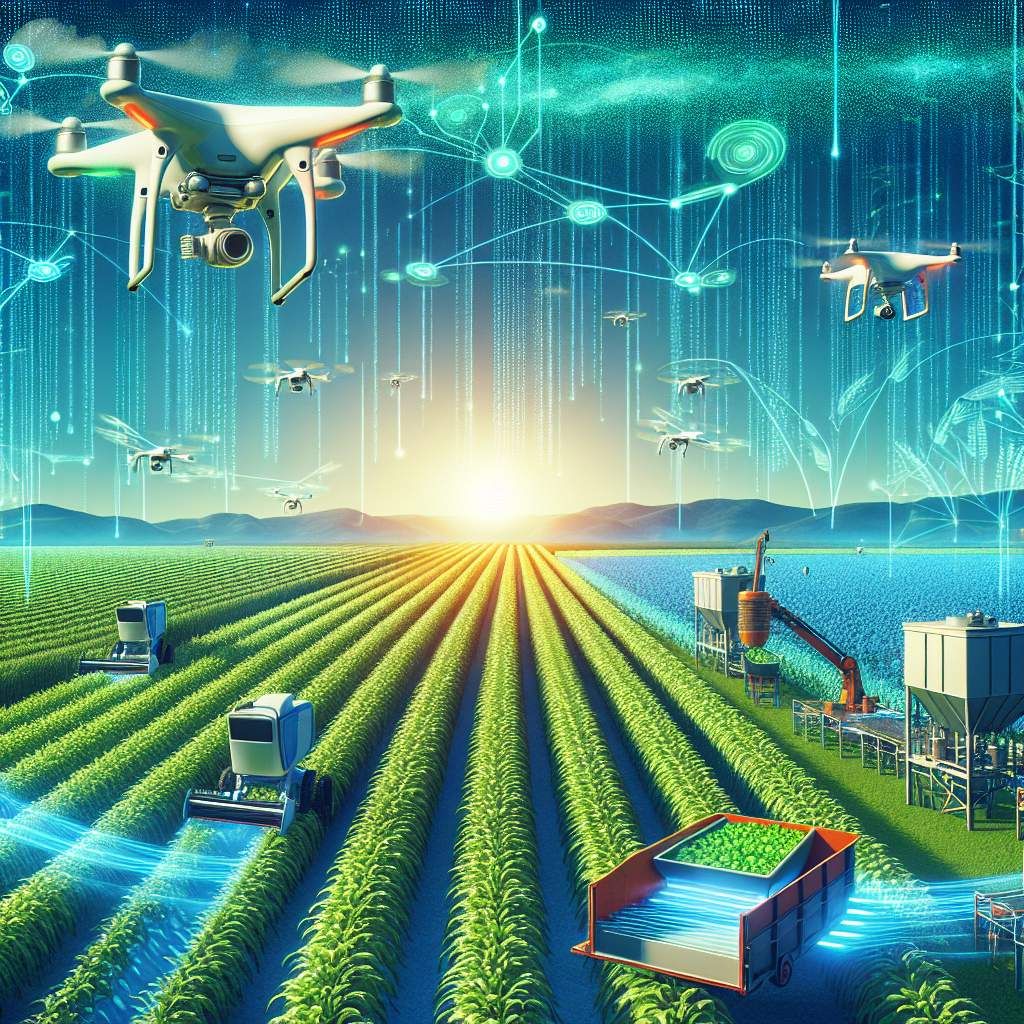In recent years, artificial intelligence (AI) technologies have been increasingly utilized in the agricultural industry, particularly in crop harvesting and processing. These technologies have the potential to revolutionize the way crops are grown, harvested, and processed, leading to increased efficiency, higher yields, and reduced labor costs. In this article, we will explore the various AI technologies that are being used in crop harvesting and processing, and their benefits for farmers and the industry as a whole.
AI Technologies for Crop Harvesting
One of the key areas where AI technologies are being used in crop harvesting is in the development of autonomous harvesting machines. These machines are equipped with sensors, cameras, and AI algorithms that allow them to navigate through fields, identify ripe crops, and harvest them with minimal human intervention. This not only reduces the need for manual labor but also ensures that crops are harvested at the optimal time, leading to higher yields and better quality produce.
Another area where AI is being used in crop harvesting is in the development of robotic arms and grippers that can pick fruits and vegetables with the same care and precision as human hands. These robotic systems are equipped with advanced computer vision systems that allow them to identify and pick ripe produce without damaging it. This technology is particularly useful for crops that are delicate or easily bruised, such as berries and tomatoes.
AI Technologies for Crop Processing
In addition to crop harvesting, AI technologies are also being used in crop processing to improve efficiency and quality. One example of this is the use of AI algorithms to optimize the processing of grains and seeds. These algorithms can analyze data on moisture content, temperature, and other factors to determine the optimal processing conditions, leading to higher yields and better quality products.
AI is also being used in the development of sorting and grading systems for fruits and vegetables. These systems use computer vision and machine learning algorithms to identify and classify produce based on factors such as size, color, and ripeness. This allows farmers to sort their crops more efficiently, reducing waste and ensuring that only the highest quality produce reaches the market.
Benefits of AI Technologies for Crop Harvesting and Processing
The use of AI technologies in crop harvesting and processing offers several benefits for farmers and the agricultural industry as a whole. Some of the key benefits include:
1. Increased efficiency: AI technologies can help farmers increase efficiency in crop harvesting and processing, leading to higher yields and reduced labor costs.
2. Improved quality: By using AI algorithms to optimize processing conditions and sort produce, farmers can ensure that only the highest quality crops reach the market.
3. Reduced waste: AI technologies can help farmers reduce waste by ensuring that crops are harvested and processed at the optimal time and that only the best quality produce is selected for sale.
4. Labor savings: Autonomous harvesting machines and robotic systems can reduce the need for manual labor, allowing farmers to focus on other tasks and reducing labor costs.
5. Data-driven decision making: AI technologies can analyze large amounts of data on crop yields, weather conditions, and other factors to help farmers make more informed decisions about when to harvest and process their crops.
FAQs
Q: How much does it cost to implement AI technologies for crop harvesting and processing?
A: The cost of implementing AI technologies for crop harvesting and processing can vary depending on the size of the farm, the type of crops being grown, and the specific technologies being used. However, many farmers find that the long-term benefits of increased efficiency and higher yields outweigh the initial investment in AI technology.
Q: Are AI technologies for crop harvesting and processing easy to use?
A: While some AI technologies can be complex to set up and maintain, many companies that offer these technologies provide training and support to help farmers get started. Once the systems are up and running, they are designed to be user-friendly and intuitive to use.
Q: Can AI technologies replace human labor in crop harvesting and processing?
A: While AI technologies can reduce the need for manual labor in crop harvesting and processing, they are not intended to replace human workers entirely. Instead, they are designed to complement human labor and help farmers increase efficiency and productivity.
Q: Are there any risks or challenges associated with using AI technologies for crop harvesting and processing?
A: Like any technology, AI technologies for crop harvesting and processing come with their own set of risks and challenges. These can include technical issues, data security concerns, and the need for ongoing maintenance and updates. However, many farmers find that the benefits of using AI technology outweigh these challenges.
In conclusion, AI technologies have the potential to transform the way crops are harvested and processed, leading to increased efficiency, higher yields, and improved quality. By utilizing advanced algorithms and computer vision systems, farmers can optimize their operations and reduce waste, ultimately benefiting both the industry and consumers. As the technology continues to advance, we can expect to see even more innovative solutions for crop harvesting and processing that will help farmers meet the growing demand for food in a sustainable and efficient manner.

